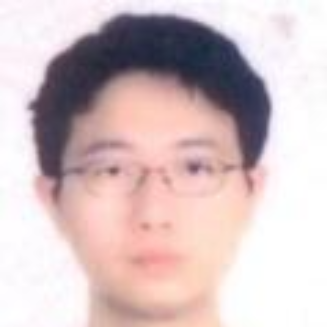International Journal of Image, Graphics and Signal Processing (IJIGSP)
IJIGSP Vol. 7, No. 2, 8 Jan. 2015
Cover page and Table of Contents: PDF (size: 541KB)
Pavement Crack Detection Using Spectral Clustering Method
Full Text (PDF, 541KB), PP.56-62
Views: 0 Downloads: 0
Author(s)
Index Terms
Crack detection, Spectral clustering, Phase information, Spatial relations, Oriented energy model
Abstract
Pavement crack detection plays an important role in pavement maintaining and management, nowadays, which could be performed through remote image analysis. Thus, edges of pavement crack should be extracted in advance; in general, traditional edge detection methods don’t consider phase information and the spatial relationship between the adjacent image areas to extract the edges. To overcome the deficiency of the traditional approaches, this paper proposes a pavement crack detection algorithm based on spectral clustering method. Firstly, a measure of similarity between pairs of pixels is taken into account through orientation energy. Then, spatial relationship is needed to find regions where similarity between pixels in a given region is high and similarity between pixels in different regions is low. After that, crack edge detection is completed with spectral clustering method. The presented method has been run on some real life images of pavement crack, experimental results display that the crack detection method of this paper could obtain ideal result.
Cite This Paper
Jin Huazhong, Ye Zhiwei, Su Jun,"Pavement Crack Detection Using Spectral Clustering Method", IJIGSP, vol.7, no.2, pp. 56-62, 2015. DOI: 10.5815/ijigsp.2015.02.08
Reference
[1]Wang K C P, Elliott R P. and Meadors A., “Application and Validation of An Automated Cracking Survey System,” Proceedings of the 6th International Conference on Managing Pavements, pp.1-19, 2004.
[2]B. B. Song and N. Wei,“ Region Connecting Based Pavement Image Cracks Extraction” , Applied Mechanics and Materials, Vols.135-136, pp.715-719, Oct.2011.
[3]K. Wang, Z. Hou, and S. Williams, “Precision Test of Cracking Surveys with the Automated Distress Analyzer”, Journal of Transportation Engineering, Vol.137, No.8, pp. 571-579, Aug. 2011.
[4]W. Cai, A. Dong, X. Zhang, “Crack Width Detection of the Concrete Surfaced Based on Images”, Advances in Computer, Communication, Control and Automation, Vol.121, pp. 625-632, 2012.
[5]A. Ayenu-Prah and N. Attoh-Okine, “Evaluating pavement cracks with bidimensional empirical mode decomposition,” EURASIP J. Adv. Signal Process, pp.1-7, 2008.
[6]Yan M D, Bo S B, Xu K, et al., “Pavement Crack Detection and Analysis for High-grade Highway,” the 8th International Conference on Electronic Measurement and Instruments, Vancouver, Canada, pp.548-552, 2007.
[7]J. Zhou, P S Huang and F P. Chiang, “Wavelet-based Pavement Distress Detection and Evaluation,” Optical Engineering, Vol.45, No.2, pp.1-10, 2006.
[8]P. Subirats, J. Dumoulin V. Legeay, et al., “Automation of Pavement Surface Crack Detection Using the Continuous Wavelet Transform,” International Conference on Image Processing, Florence, Italy, 2006.
[9]P. Kovesi, “Edges Are Not Just Steps,” In: The 5th Asian Conference on Computer Vision (ACCV 2002), pp. 23-25. Jan. 2002.
[10]Morrone M.C. and Burr D. C., “Feature Detection in Human Vision: A Phase Dependent Energy Model,” In: Proceedings of the Royal Society of London. Series B, Biological Sciences, Vol.235, No.1280, pp.221-245, Dec.1988.
[11]Jin Huazhong, Zhou Qi and Chen Mingquan, “Edge Detection of Aerial Image based on Oriented Energy and Spectral Clustering”, Journey of Hubei University of Technology, Vol.26, No.2, pp.57-60, 2011. ( In Chinese)
[12]Ben Robbins and Robyn Owens, “2D Feature detection via local energy”, Image and Vision Computing, Vol.15, No.5, pp.353-368, May 1997.
[13]J. Malik, S. Belongie, T. Leung et a1., “Contour and texture analysis for image segmentation”, Intl. Journal of Computer Vision,Vol.5, No.1, pp.7-27. 2000.
[14]Cai Xiaoyan, Dai Guanzhong, and Yang libin, “Survey on Spectral Clustering Algorithms”, Computer Science, Vol. 35, No. 7, pp. 14-18, 2008. ( In Chinese)
[15]A.Y. Ng, M. I. Jordan and Y. Weiss, “On spectral clustering: Analysis and an algorithm”, In: Proc. of NIPS 2001, pp. 849-856, 2001.
[16]S. Sarkar and P. Soundararajan, “Supervised learning of large perceptual organization: Graph spectral partitioning and learning automata”, IEEE Transaction on Pattern Analysis and Machine Intelligence, Vol.22, No.5, pp.504-525, 2000.
[17]J. Shi and J. Malik, “Normalized cuts and image segmentation”, IEEE Trans. On Pattern Analysis and Machine Intelligence, Vol. 22, pp. 888-905, 2000.
[18]Jin Huazhong, Xie Haitao, Wang Ji, et al., “Edge Detection of High Resolution Image Introducing Spatial Relationship”, The 2012 International Conference on Computer Science and Service System, pp. 2273-2276. Aug. 2012.

